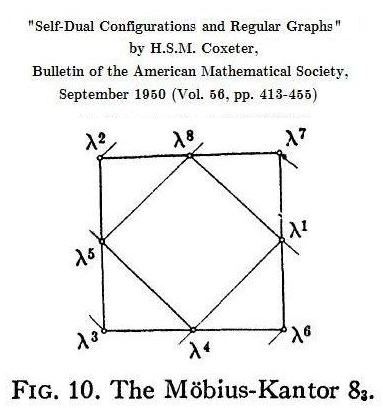|
On the late Cambridge astronomer Donald Lynden-Bell — "As an academic at a time when students listened and lecturers lectured, he had the disconcerting habit of instead picking on a random undergraduate and testing them on the topic. One former student, now a professor, remembered how he would 'ask on-the-spot questions while announcing that his daughter would solve these problems at the breakfast table'. He got away with it because he was genuinely interested in the work of his colleagues and students, and came to be viewed with great affection by them. He also got away with it because he was well established as a titan of the field." — The London Times on Feb. 8, 2018, at 5 PM (British time) |
Related material —
Two Log24 posts from yesteday, Art Wars and The Void.
See as well the field GF(9) …

… and the 3×3 grid as a symbol of Apollo
(an Olympian rather than a Titan) —












